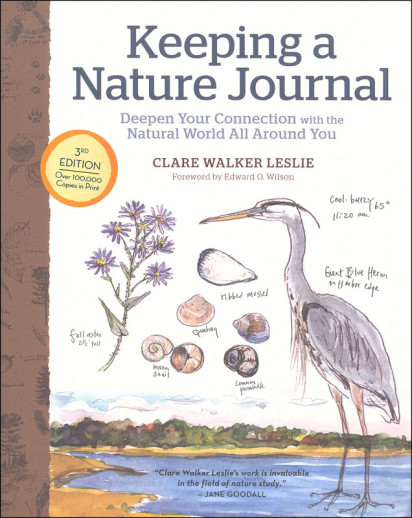We use cookies to make your experience better. To comply with the new e-Privacy directive, we need to ask for your consent to set the cookies. Learn more.
Keeping a Nature Journal, 3rd Edition
Learn to slow down and enjoy life as you observe and reflect upon the world around you. In Part One of this book, you will learn what it means to keep a nature journal, how to start exploring, and how to express your thoughts using the written word and drawings. If you're not a great artist, don't panic! This book will help you lay aside your fears as it encourages you to improve your skills through practice.
Part Two of this manual focuses on the ongoing journal, providing ideas to keep your journal active throughout the changing seasons. Centering a portion of your seasonal observations on a stationary object or place such as the tree across the street, an easily observed park or street corner, or even the moon will lend a sense of continuity to your entries.
The final section is entitled "Learning and Teaching Nature Journaling." This segment consists of a number of exercises to help the reader gain confidence with basic drawing skills including contour, capturing basic shapes, foreshortening, perspective, and shading. The author has also provided helpful tips to simplify drawing flowers, landscapes, weather, reptiles and amphibians, birds, and other objects which may prove difficult to capture on paper.
The last few chapters of this section are devoted to the idea of teaching the art of nature journaling to people of all ages, and adapting nature journaling to a group activity. This portion stresses the role of the teacher in creating learning situations that stimulate learners to begin writing or drawing in a journal.
The book has just a bit of evolutionary content in it, but nothing that can't be avoided. A helpful appendix at the back of the book gives suggested reading, additional resources, and a suggested scale for teachers to assess nature journaling skills. Complete index. - Rachel
| Product Format: | Softcover Book |
|---|---|
| Brand: | Storey Books |
| Author: | Clare Walker Leslie |
| Grades: | 3-AD |
| ISBN: | 9781635862287 |
| Length in Inches: | 10 |
| Width in Inches: | 9.3125 |
| Height in Inches: | 0.625 |
| Weight in Pounds: | 1.95 |

